Seventy-five percent of our planet’s active volcanoes are found on the circumference of the Pacific Ocean, the so-called “Pacific Ring of Fire.” The Japanese islands sit just astride this volatile belt. Canadian adventure travel writers and photographers Janick Lemieux and Pierre Bouchard undertook a journey to explore this tectonically tormented and culturally diverse zone on their mountain bike—a mega MTB-trek they came to call their “cyclo-volcanic” quest. This is the illustrated account of what they saw and experienced during their patrol of Japan’s mountains of fire.
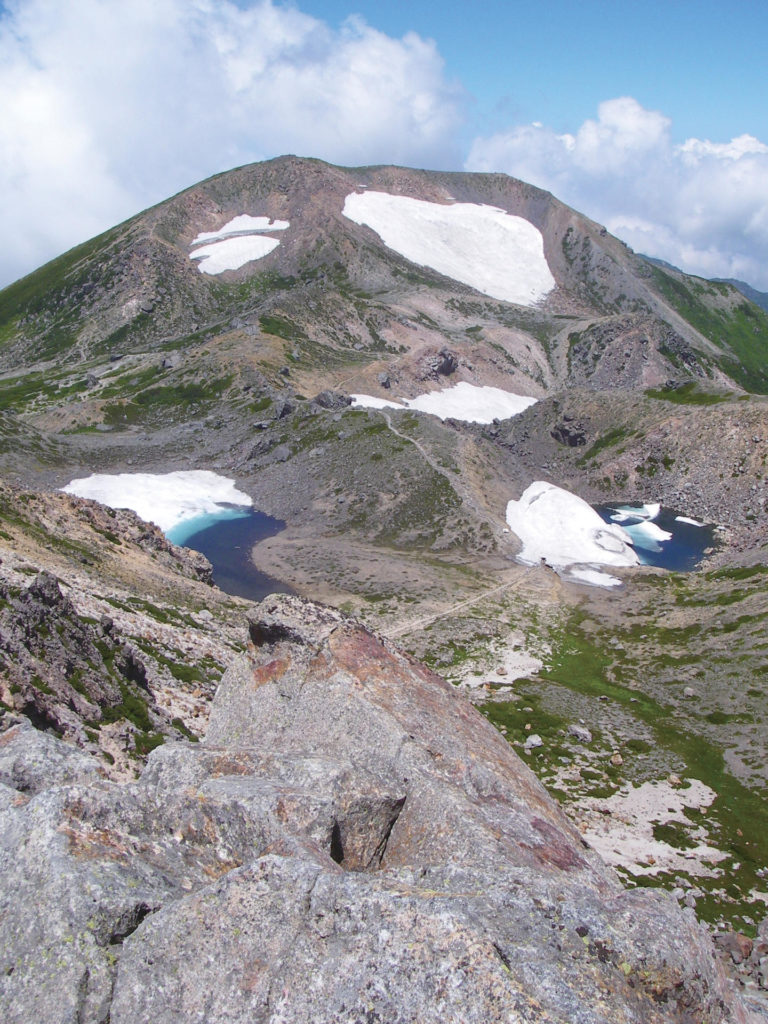
It was December, and we were camped on a frozen Tibetan plateau with a view on Mt. Everest. We still had to cycle over the Himalayas and down to the Bay of Bengal in order to complete a continental crossing we had started in Magadan, Siberia, seven months earlier. “What if we get out of here alive?” We wondered out loud during another sleepless night spent in thin glacial air. We planned to keep riding somewhere, some other mountainous area of our planet, but were quickly reminded our toes had become frost bitten.
“Maybe, we could travel in warmer mountains.” We pondered. Heat, fire, mountains, volcanoes…the Pacific Ring of Fire.
And so, with our bikes laden with heavy panniers filled with the necessary gear for a long journey, we left Vancouver, Canada, due South. Some 50 months and 40,000 kilometers later—most of them pedaled clockwise around the Big Ocean—we disembarked in Nagoya.
Our eight-month, 10,000-kilometer tour through Japan’s volcanoes began with a roller coaster ride through the Alps. Takayama, the Norikura Skyline and Kusatsu Onsen introduced us to some of our favorite areas: traditional architecture, mountain toll roads and—of course—onsen.
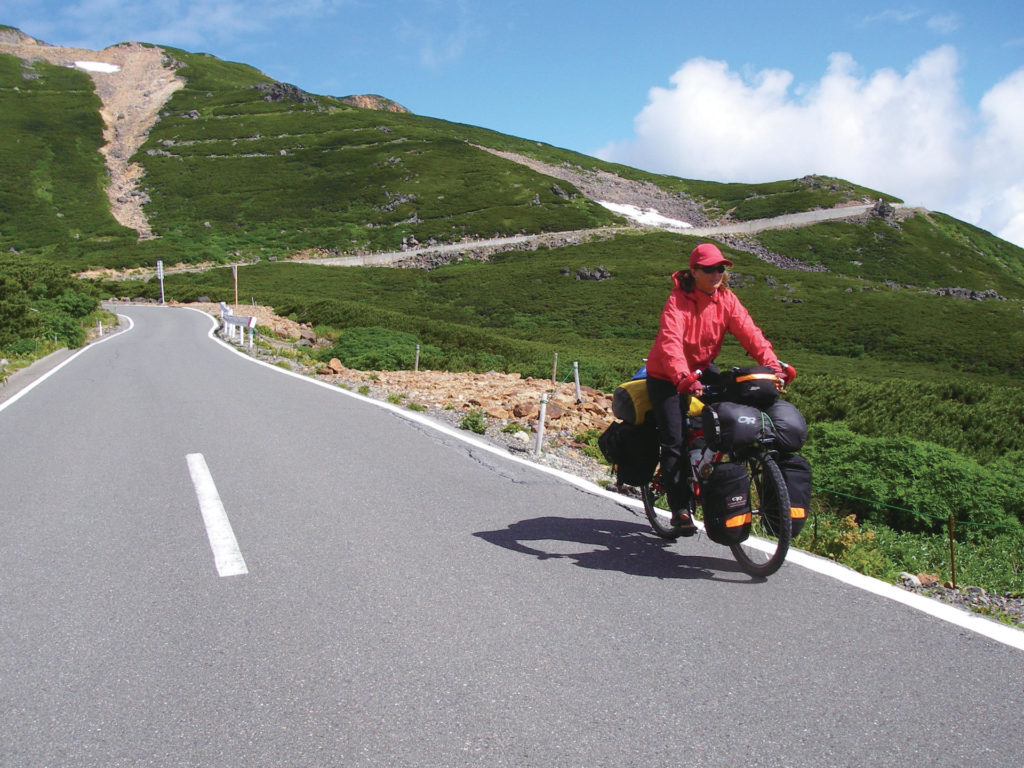
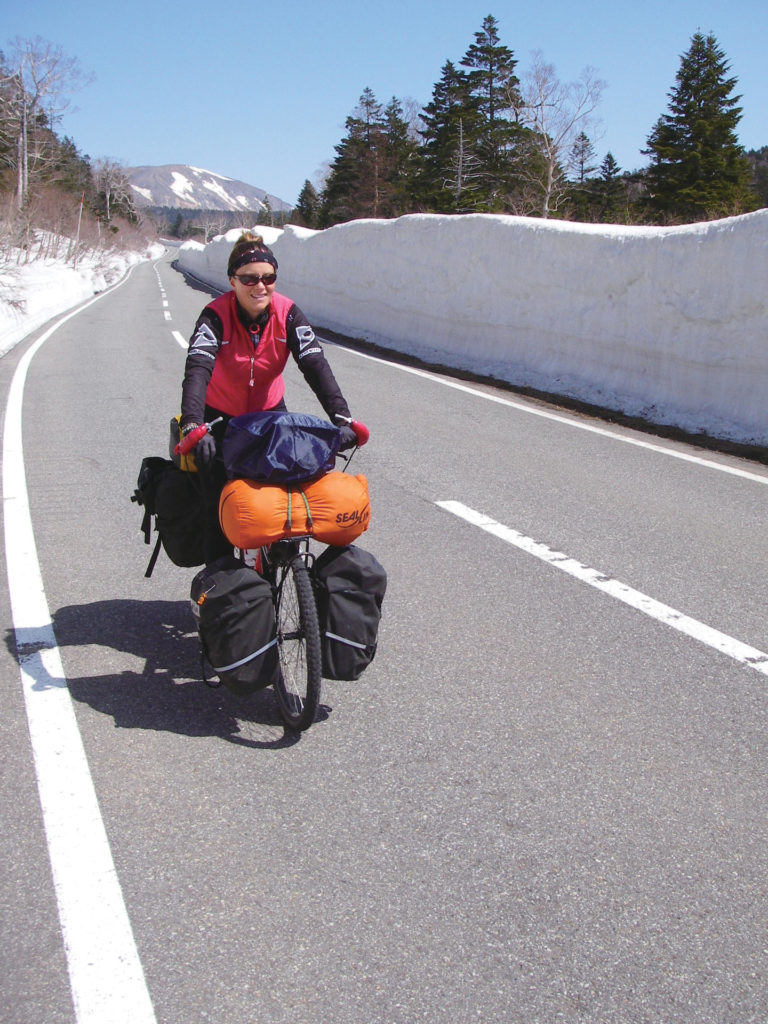
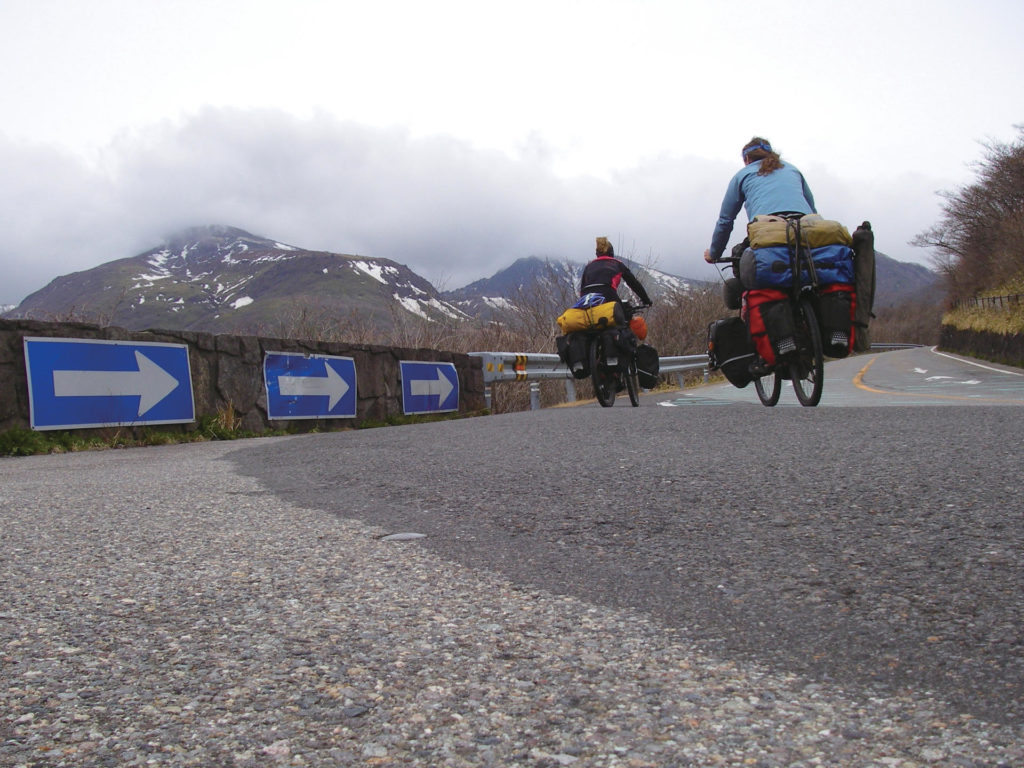
However, the high point was a scenic hike up to the summit of Ontake, sharing the deity-laden trail with yamabushi, the holy men who patrol Japan’s sacred mountains. In Tochigi Prefecture, we dismantled long enough to visit the famous Nikko sites before tumbling into Gunma Prefecture via the quiet Konsei Pass.
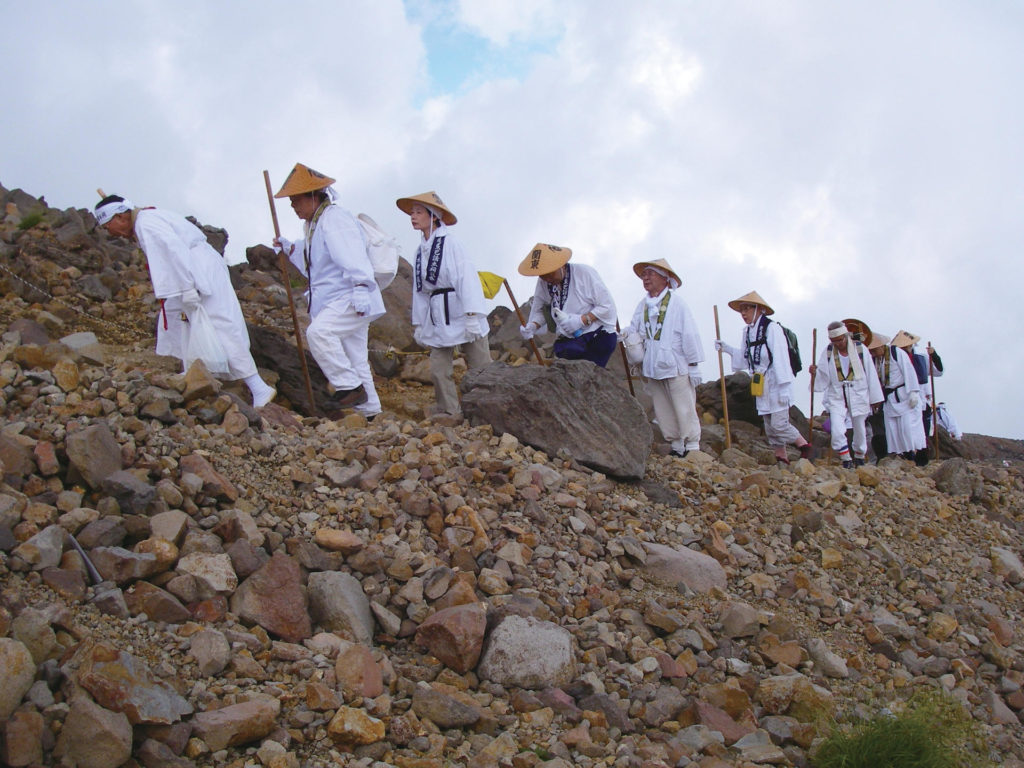
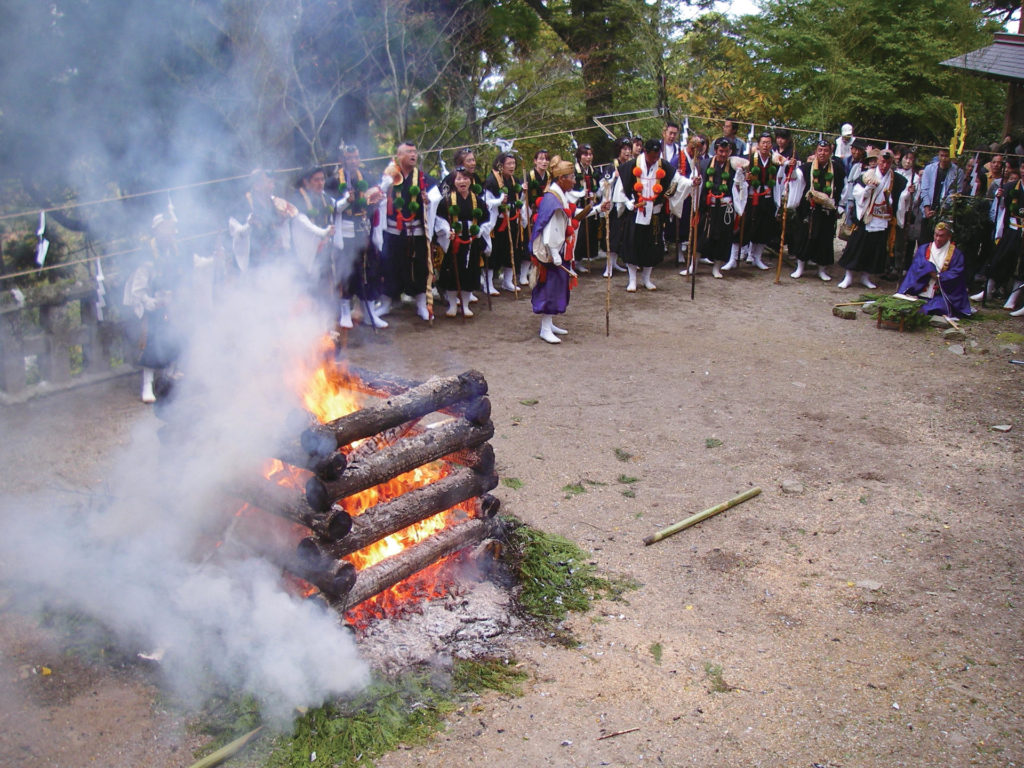
From downtown Tokyo, Mt. Hakone and Fuji-san were obvious destinations before sprinting to the Atsumi Peninsula. Next came Nara and Kyoto, a stint of manmade splendors on the way to the quiet San-In Coast with its Sanbe-san and Mt. Daisen.
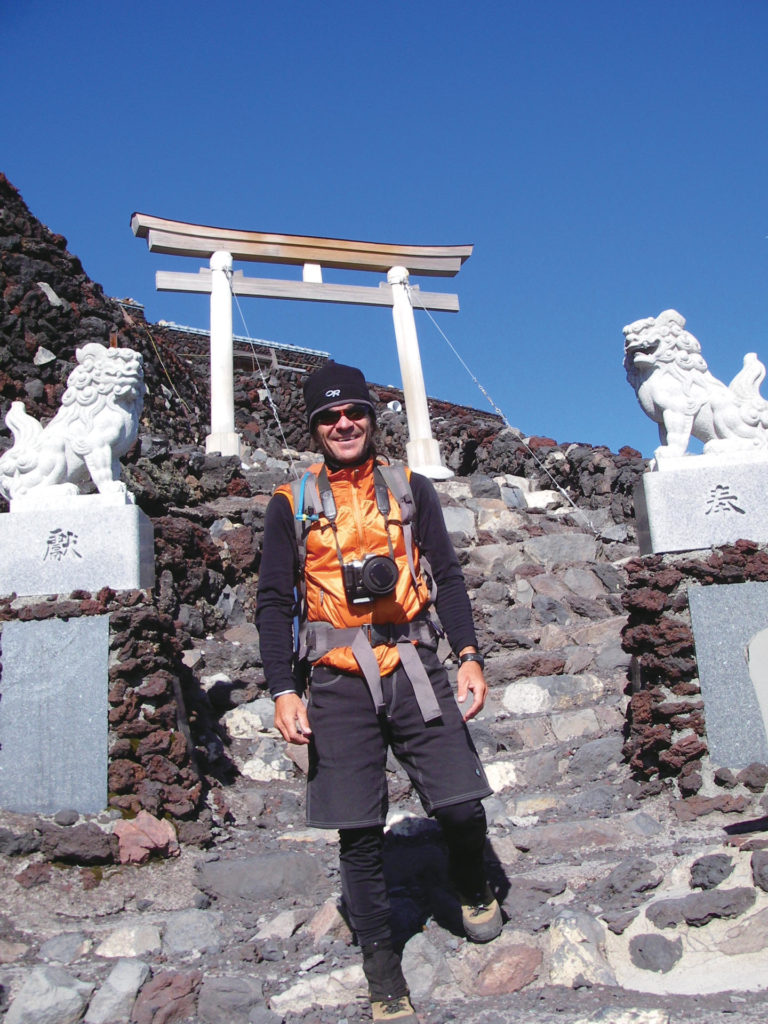
We crossed from Honshu to Kyushu by riding in the underwater tunnel below the Kannon Strait. We emerged a few days away from Beppu and its highly entertaining wackiness. Hiko-san was closing for the season when we arrived, and yamabushi were busy chanting and walking on hot red coals.
The Aso caldera and Unzen provided some of the most dramatic volcanic vistas we’d encountered in years of volcano hunting, before we had reached historic Nagasaki. Nearby Kagoshima was our exit point for a short holiday break—everyone in the Bouchard and Lemieux families received yukata for Christmas.
Flying into Narita this time, we headed north into Tohoku fresh on the sakura trail. We visited Mt. Nasu, Aizu-Wakamatsu, Mt. Bandai, the fantastic Bandai-Azuma Skyline and Zao Onsen along the way. In Akita, Iwate and Aomori prefectures, our tights grew harder and larger as the steep climbs just kept coming. Along the Shimokita Peninsula, fist-size scallops kept our protein levels high as we cranked it up to Osore-zan and its unforgettable mystical wasteland.
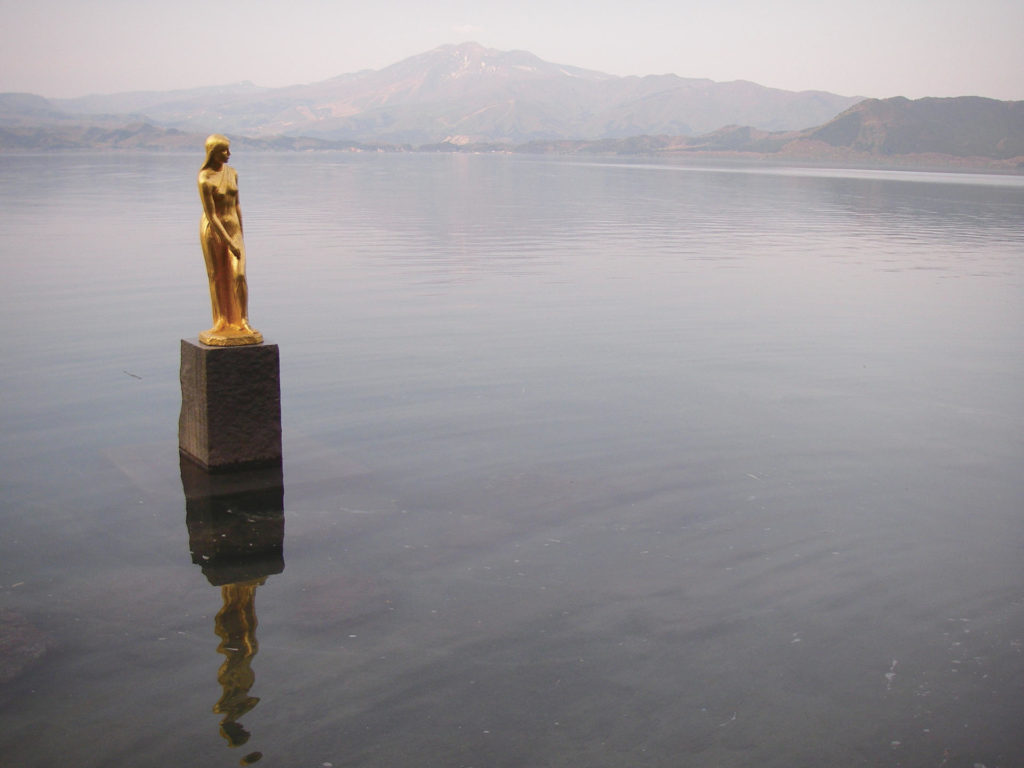
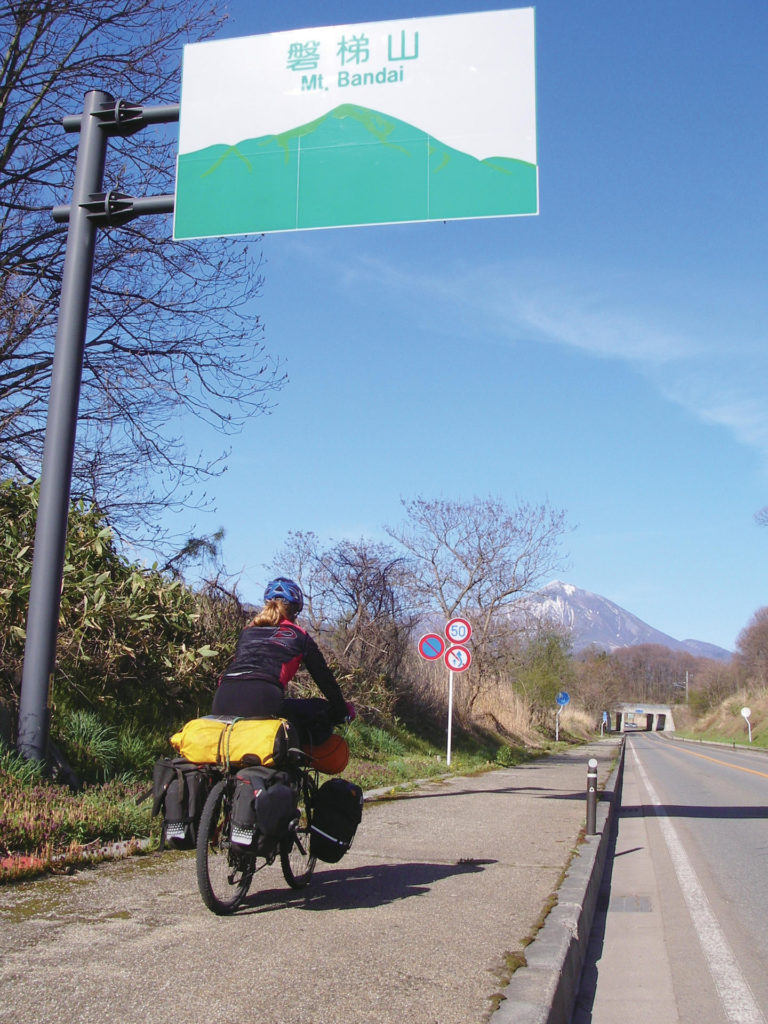
On Hokkaido, we followed the Michi-No-Eki circuit from Hakodate to Sapporo via Niseko, Toya-ko, Noboribetsu’s jigoku and Shikotsu-ko. It was now well into the summer season, and towns hosted festive matsuri. We indulged in many a crepe and hot dog at these colorful gatherings.
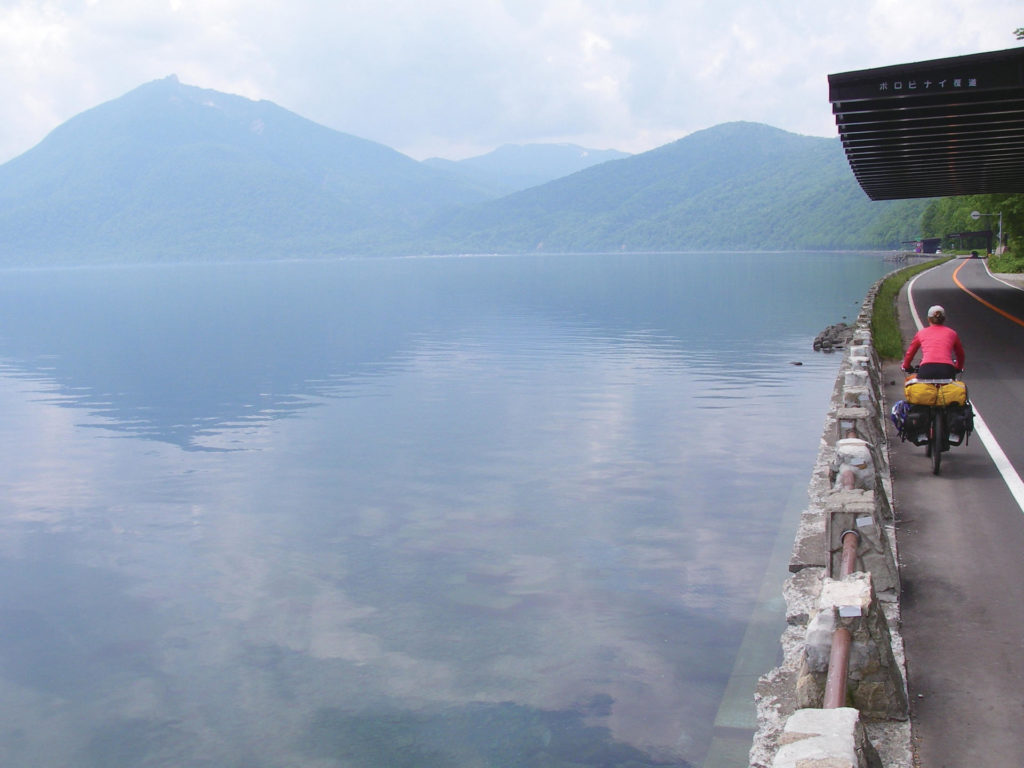
Shiretoko Peninsula and Akan caldera put the cherry on the volcanic sundae, and soon we were in Tomakomai, embarking on a ferry to Oarai, which would deliver us to Narita in just a few hours…
Like Basho, we believe that “Life is a journey, and the journey itself is home.” The Japanese stretch of this “cyclo-volcanic” quest had been a sunny Sunday afternoon among friends: pure joy and looking forward to the next one already.
Where are they now?
As this issue of Outdoor Japan Magazine was going to press, the couple of adventurers were riding in Northern British Columbia toward the last mountains of fire remaining on their “red” list. Volcanoes dozing, hissing and puffing in remote and magical spots of Western Canada and Alaska. Having completed the full circle, they plan on heading to Hawaii for a last volcanic treat, a kind of icing on the Ring…
THE WORLD WIDE TOUR
Since May 1990, we have pedaled some 150,000 km. in about 50 countries. We started with a couple of continental loops. The first one took us from Quebec City to Quebec City, our hometown, and included two crossings of Canada, myriads of zigzags throughout the Western part of North America, from Mexico’s Mazatlan to Alaska’s Prudhoe Bay, along with a stopover on Hawaii.
The next, in Europe this time, from the French Alps to the French Alps via Northern Italy, Switzerland, Germany, Denmark, Faroe Islands, Iceland, where we spent a second summer in a row under the Midnight sun, and then Scotland, Ireland, Wales, England and Belgium.
We undertook a first continental crossing from the same valley in the French Alps, south of Grenoble, to end up all the way to Vladivostok, in Russia, via Corsica, Sardigna, Italy, Greece, Turkey and all across Russia, from its Black Sea coast to its Sea of Japan coast.
Another continental crossing went from Beijing to Singapore via Xi’an, Chengdu, Chongqing, Guangzhou, Hong Kong, Vietnam, Laos, Thailand, Malaysia and Indonesia (Sumatra). We then went to catch our breath in New Zealand before going back to our Whistler base camp to get ready for our Siberia-to-India crossing, an epic trek throughout Asia’s hinterland. It was during this expedition when we started to dream about volcanoes of the “Ring.”
THE WORLDWIDE WEB
For more on the Ring of Fire tour visit www.pedalmag.com and click on “Ring of Fire.”
RING OF FIRE MOMENTS
Favorite volcanoes: Tokachi-dake and Miyake-jima.
Strangest food: Whale sashimi.
Scariest moment: Crossing the Nissho-toge tunnel between Shimizu and Hidaka, South Hokkaido.
Strangest place to sleep/camp: Homeless tenting and “cardboard-boxing” quarters at Takeshiba ferry terminal, downtown Tokyo.
Funniest moment: When two inebriated gentlemen on holidays and sleeping in their car at Kusatsu Onsen Michi-no-eki asked to borrow our loaded bikes to the next sake shop. We found a safer way to get there, became good friends and later visited with them in Tokyo.
Best thing about cycle touring in Japan: The almost nil petty crime rate; being able to bathe as often as we wanted, the gracious Japanese.
Worst thing about cycle touring in Japan: Its wanna-be-bike-paths sidewalks.
Favorite road/route: Norikura Skyline, a sweet carless ride.
Worst road/route: Between Mt. Kuju and Aso, the Yamanami Highway. No shoulder, too many tour buses and invisible white pickets on the white line.




